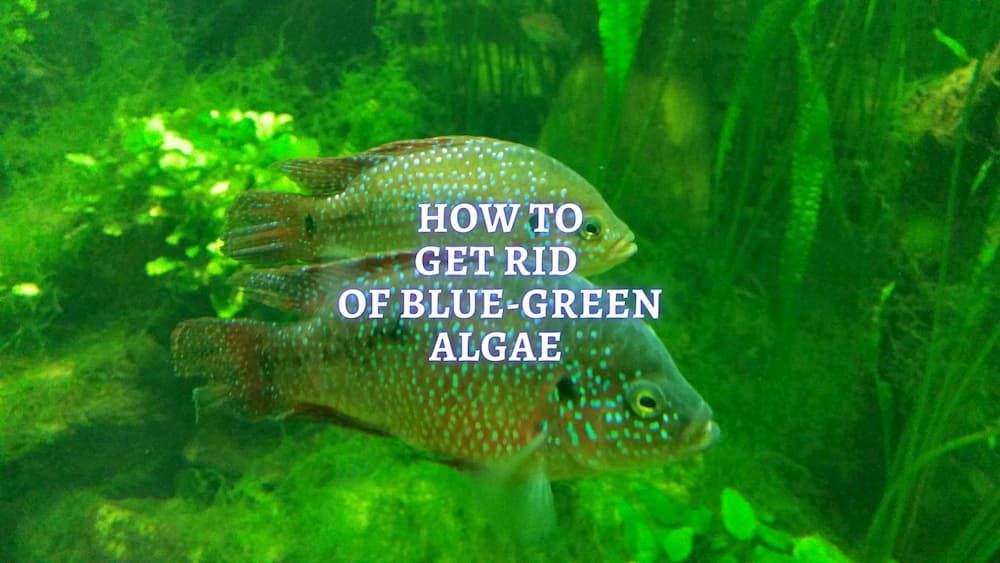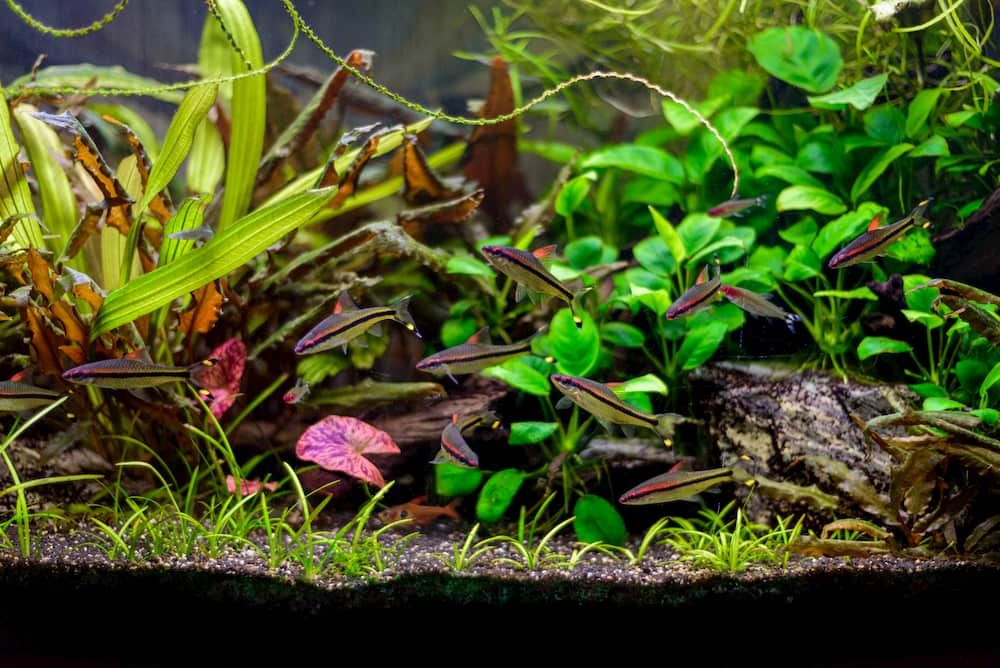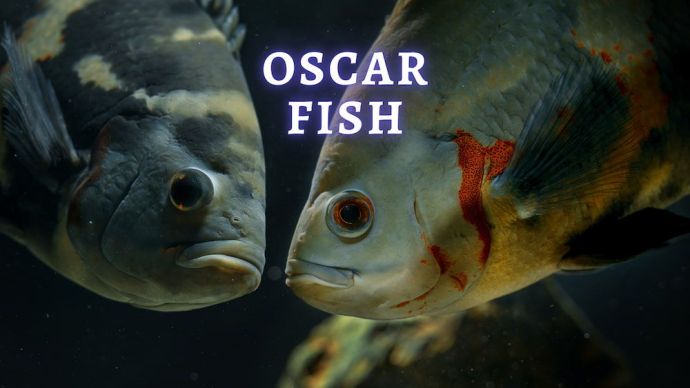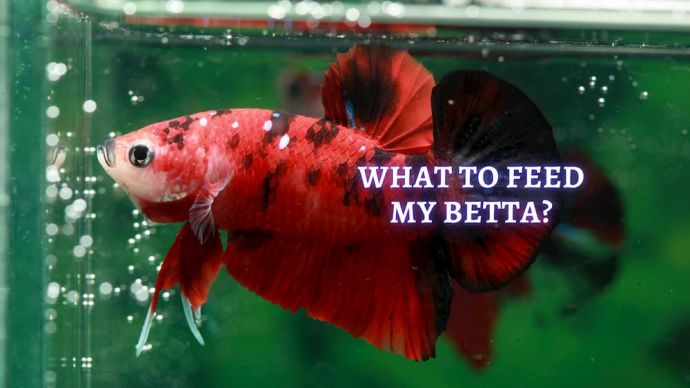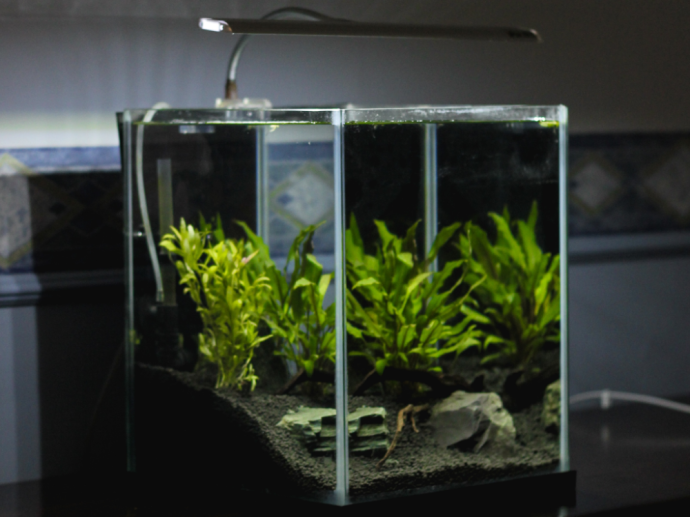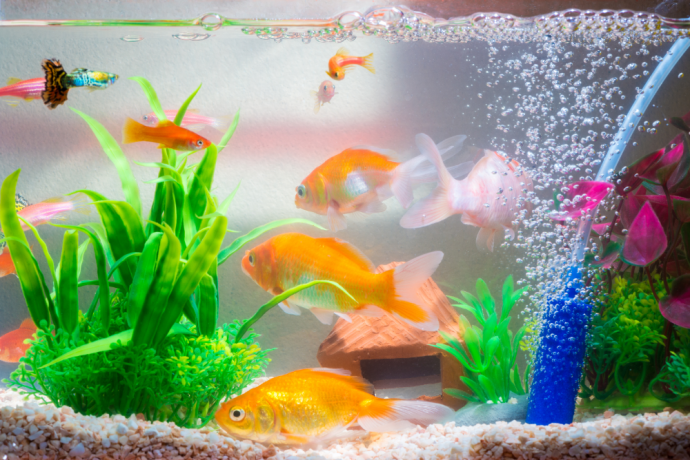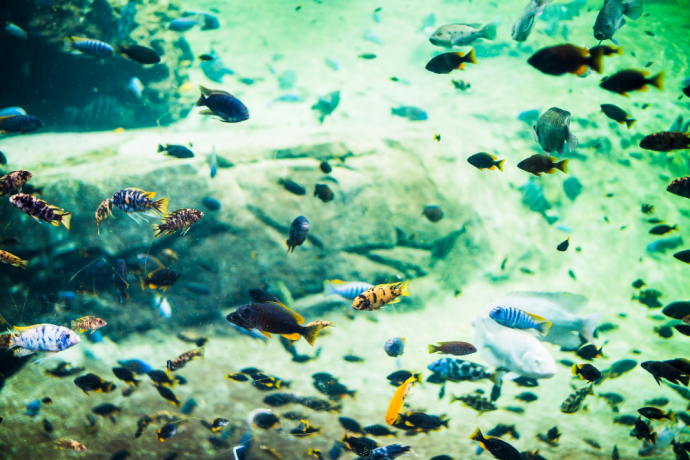How to Get Rid of Blue-Green Algae?
Written by:
Author: Alina Andreeva
Alina A. is a professional writer, editor, and pet-lover. She has published over 50 articles on how to care for pets properly. Alina has been writing articles for 3 years, so she has considerable experience in this niche. Her natural curiosity helps her to expand her knowledge and learn new pet care life hacks, which will make your life much easier.
View all 79 articlesLearn about our editorial process and veterinary review board.
Viewed: 971
Updated on: 02/22/2023
The last thing you want from your aquarium is disgusting green-blue algae. Not only does it utterly ruin the appearance of your tank, but it can also damage the health of the plants residing within it. Fortunately, although blue-green algae is toxic, no known fish or invertebrates actually eat the stuff, so your fish won’t be at too much risk. However, knowing how to spot and get rid of this blue-green algae is essential to maintain your tank’s water quality and appearance.
What is blue-green algae in aquarium?
Despite all indications, including the appearance and name, blue-green algae isn’t algae, it is actually a form of bacteria called cyanobacteria. Cyanobacteria is believed to be around 2.3 billion years old, so this is one stubborn foe that you are coming up against.
Much like plants, this form of bacteria uses light to create food, and it gets its name from the cyan color that appears when looking at it under a microscope. Blue-green algae, or cyanobacteria, also sometimes goes by BGA, green slime algae, smear algae, or pond scum.
How to identify Cyanobacteria?
Unfortunately, when cyanobacteria first appear in your freshwater tank, it is almost impossible to notice, even more so if it lurks around the existing plant life. If you have substrate, driftwood, or rocks in your aquarium, these locations will likely be where you first notice the blue-green algae, often at the front of the tank where there is most light.
However, this cyanobacteria will look like nothing more than a subtle green streak in the tank in the early days. If you are not proactive and leave it to grow/spread, that streak will turn to thick slime and work around the tank, looking almost like mold on a piece of bread. These cyanobacteria can spread FAST, even in just 24 hours.
Once it gets to this stage, it should be almost impossible to miss. Another tell-tale sign is the series of air bubbles that will likely appear when the slime grows thicker. If you fail to take action, the cyanobacteria will eventually spread across every single surface in the tank.
How can you tell blue-green algae apart from other algae?
We know what you’re thinking. Doesn’t all algae look the same? Isn’t it all just clumps of green stuff that spreads around the tank? Yes and no. Fortunately, cyanobacteria have a set of unique characteristics that will give you a chance to tell it apart from your standard algae. First, cyanobacteria clump together as one mass, meaning that if you go to pick it up, plenty will come away in one go. Also, once removed, the pungent smell of blue-green algae will be pretty hard to miss. It stinks!
That said, not every single type of cyanobacteria has this exact smell. If you are still not one hundred percent sure, take some suspected cyanobacteria and put them in a bucket with a small water amount. Leave it overnight and come back to it the next day. If it had spread/grown, you are dealing with blue-green algae. Normal algae does not spread this fast, so now is the time to eliminate your cyanobacteria problem.
READ MORE: Freshwater snails — exotic cleaners of your aquarium
What causes blue-green algae in the first place?
The biggest problem with cyanobacteria is that it is a very misunderstood creature. As such, there is so much contrasting information on the internet regarding why it appears in the first place. Blue-green algae often appear in tanks with plenty of plant life, but it has also been spotted in aquariums without.
Some claim that cyanobacteria can be found in the local water supply, which transfers to your tank when you change the water. Others claim that cyanobacteria is born from dirty filters or substrates, some blame ammonia, and we have even seen people say that poor water circulation and excess light can have an impact.
To be honest, the vast majority of the above events are behind general unhealthy tanks, meaning there will always be some overlap in terms of cyanobacteria appearance.
How to control Cyanobacteria ?
As we explained above, there are contrasting opinions on where cyanobacteria come from. One fundamental cause that most experts agreed upon is low nitrates. Aquariums with nitrate levels on zero, or another low figure, may be more open to attack from cyanobacteria. Some believe that this is because most plants and normal algae like to feed on nitrates, although cyanobacteria do not partake.
This means that blue-green algae prefer nitrate-free tanks as there is less food for the competing plant/algae life. If you purchase a nitrate testing kit and find that your levels are near zero, try raising them to 20 parts per million and remove the cyanobacteria. With any luck, it should stay away.
In terms of maintenance, removing cyanobacteria by hand can also control the spread; however, that method does have its downfalls, and it won’t even kill the blue-green algae off wholly. Read our section on hand removal below for more information!
How to get rid of Blue Green Algae in planted aquarium?
Do not be fooled into thinking that blue-green algae can be eliminated like other normal algae. As we explained before, blue-green algae isn’t algae; it is cyanobacteria. Therefore, your usual algae-killing products and techniques will not work.
However, there are many ways to get rid of cyanobacteria in your freshwater tank:
1. Remove it yourself
The good old-fashioned way to get rid of cyanobacteria, remove it yourself by hand! Blue-green algae sticks together as one mass so it is often easy to remove in clumps by hand. However, it should be pointed out that this is arguably the most annoying and disgusting way to remove cyanobacteria. Once you tug at a section of blue-green algae, smaller clumps will break off and float around the tank, eventually growing into larger sheets.
Therefore, you may find that removing it by hand actually helps the cyanobacteria to spread around the tank far faster than it previously would have. We suggest using a turkey baster if you want to remove by hand, sucking up the small clumps before they can break off and spread. It is also worth noting that this is a way of REMOVING cyanobacteria, not KILLING cyanobacteria. Even if you leave behind the tiniest patch of blue-green algae, it will immediately start to spread again.
2. Hydrogen Peroxide
While this is effective, it is a technique best left to experts. If you want to do it yourself, you should, at the very least, seek advice from an expert on the matter. This is because, if you are not careful or do not know what you’re doing, you may end up killing off the good bacteria. If you do this, it will negatively impact the fish and plants within the tank. Look up an expert guide if you want to use hydrogen peroxide doses or spot treatment on your cyanobacteria.
3. Products
There are plenty of anti-cyanobacteria products on the market designed to help you get rid of your blue-green algae problem. The UltraLife Blue-Green Slime Stain Remover is a perfect example of this. This product is designed to be much more than a stain remover, it actually stops the cyanobacteria altogether. More so, it does this without harming your plants, fish, or filter!
The same cannot be said for some harsher chemicals on the market. With this kind of product, literally, all you have to do is add a dose when you perform your next water change and watch it do its thing. Of course, simply follow the instructions on the back of whatever product you purchase. Do not be fooled though, it may take a week to see the results, so don’t be upset if the cyanobacteria is still there a few days later. Once the cyanobacteria start to die, it will dry up and turn black.
Can blue-green algae kill my freshwater fish?
As we touched on previously, many people worry that cyanobacteria could harm the fish living within their tank. However, while many types of cyanobacteria are toxic, fish simply do not eat them. While this means that they won’t harm themselves by ingesting, it also means that they won’t be on hand to help you clean up. Although it may not be directly harmful to your freshwater fish, it is always nice to maintain a clean and healthy tank in which for them to live.
READ MORE: What Freshwater Fish Eat Algae?
Can blue-green algae kill my freshwater plants?
Unfortunately for your plant life, they are not so lucky when it comes to cyanobacteria. As we touched on above, when the blue-green algae spreads around your tank, it eventually covers every surface in sight. This includes the stems and leaves of your plants. The thick sludge blocks out light, making it hard for the plants to create a food source and remain healthy. Therefore, the longer you leave the cyanobacteria infestation, the higher chance that your plant life will die off.
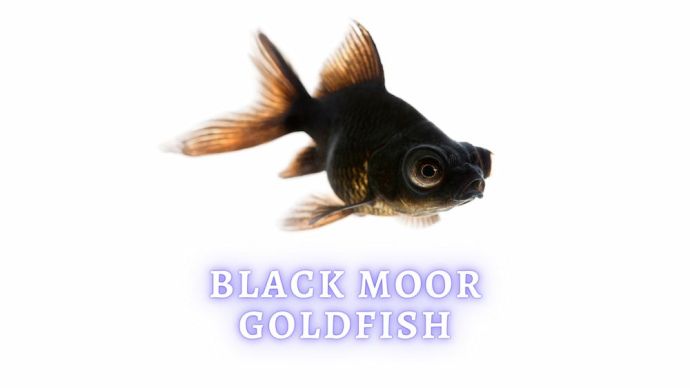 Freshwater Fish A Guide to the Black Moor Goldfish: Tank Setup, Temperatures and Care Routine
Freshwater Fish A Guide to the Black Moor Goldfish: Tank Setup, Temperatures and Care Routine - 136
- 0









